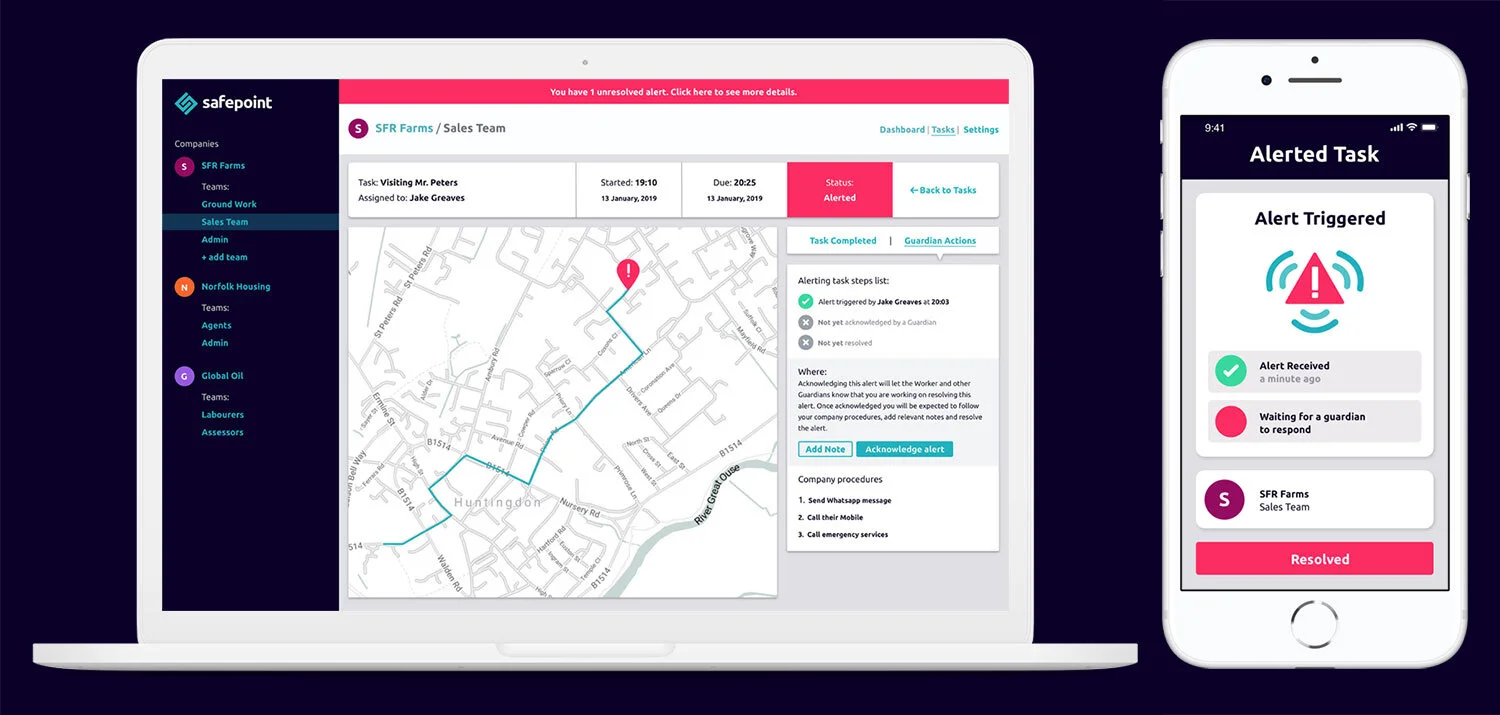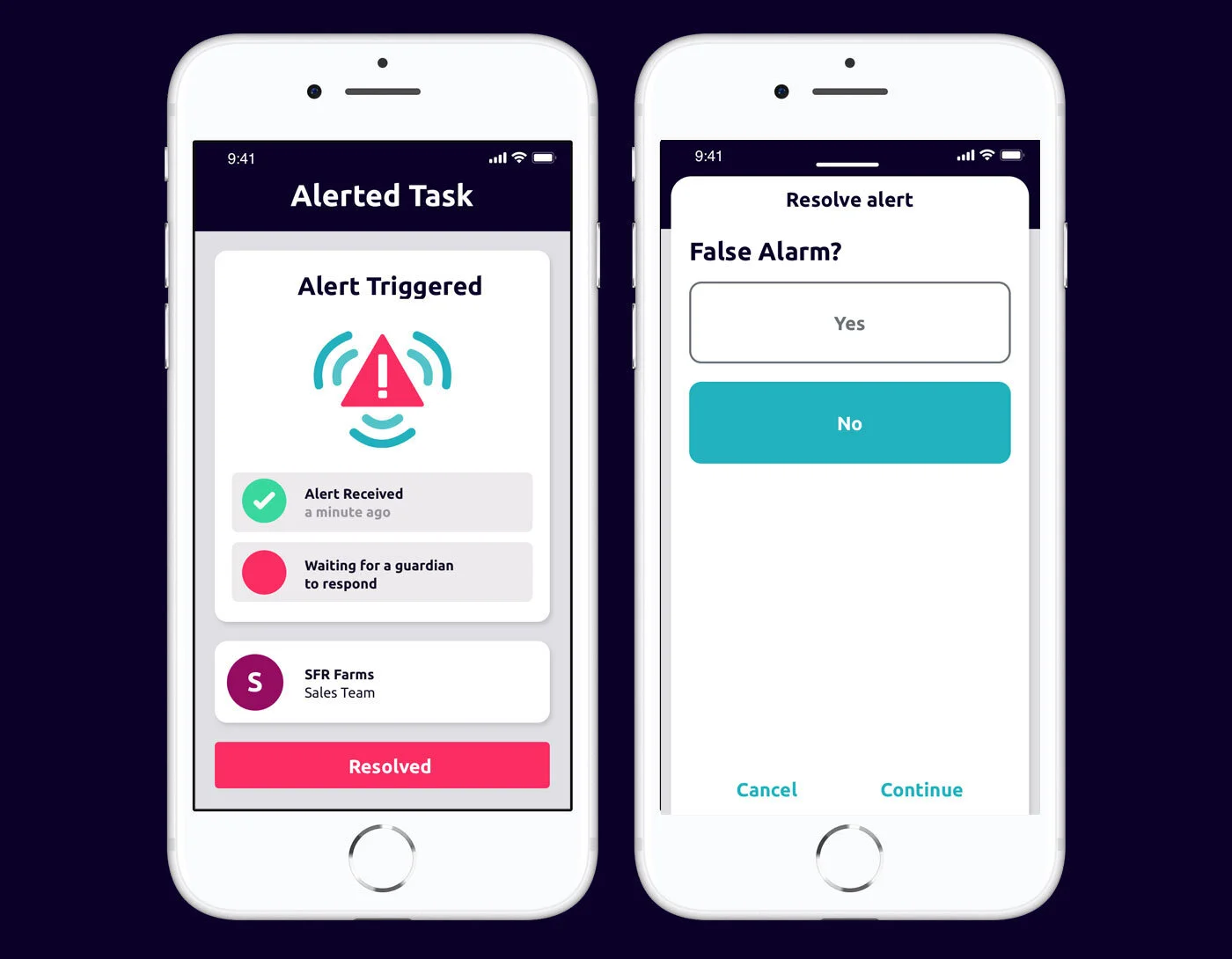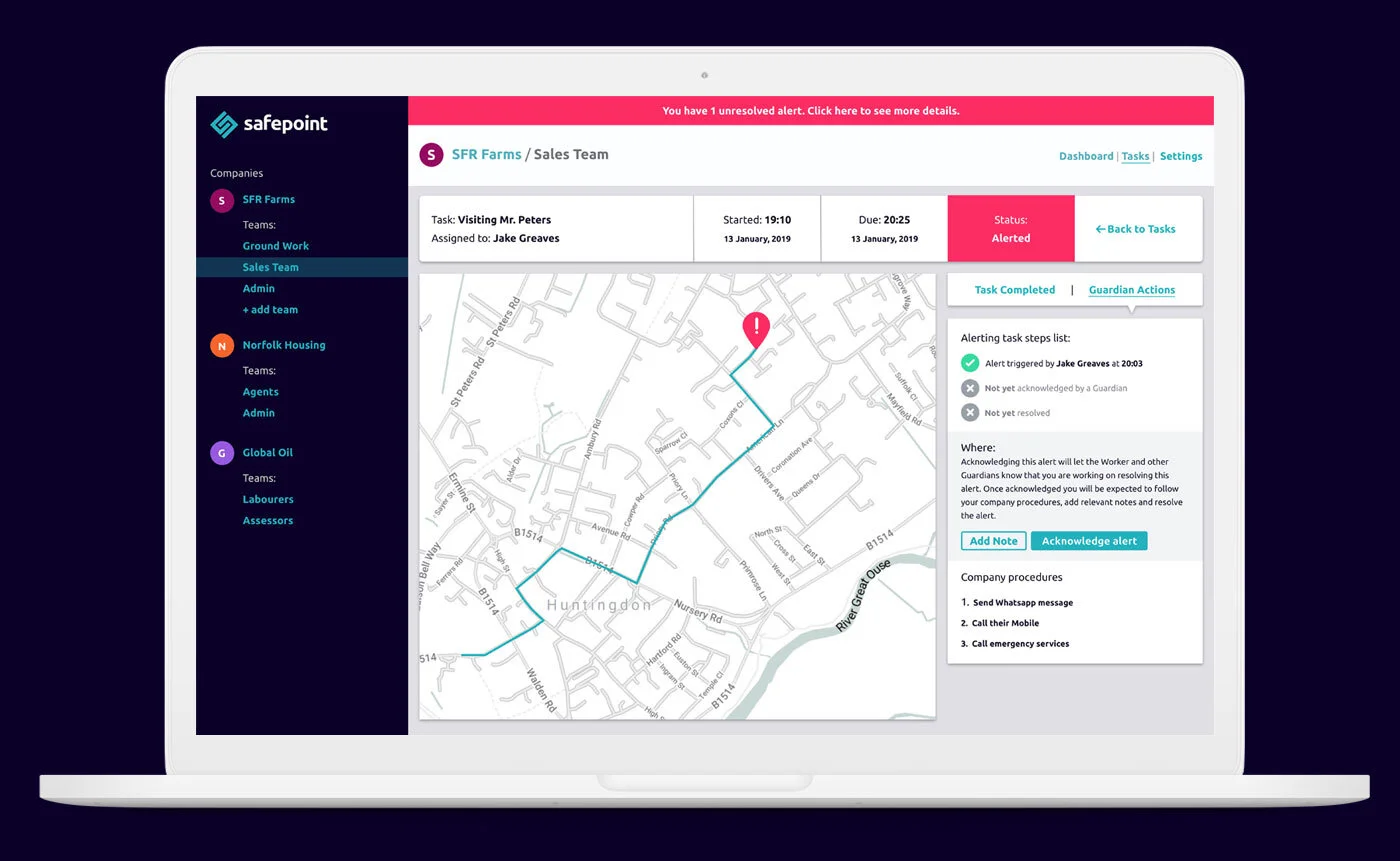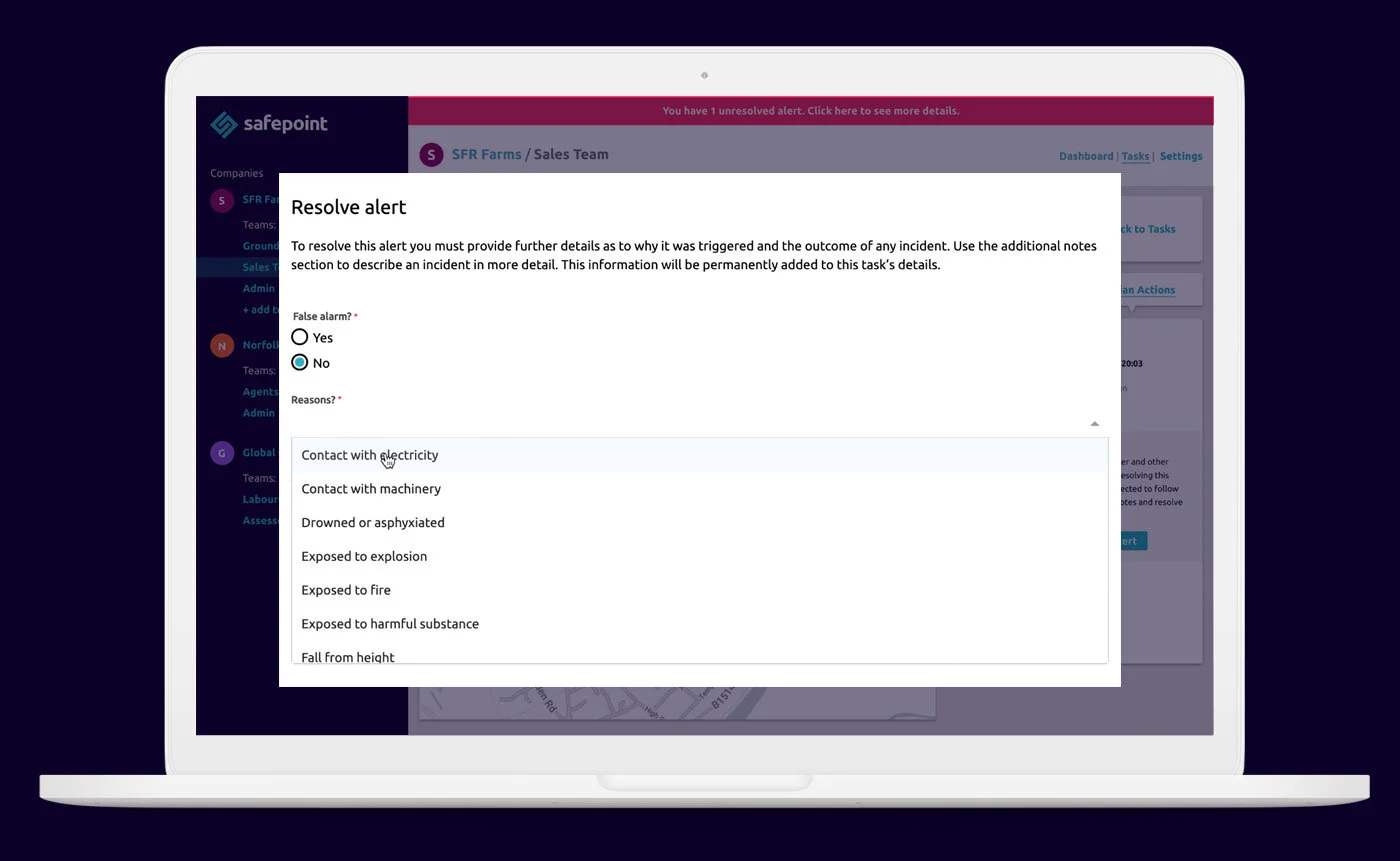Advanced Alert Resolution
Safepoint’s new Advanced Alert Resolution makes it easier for organisations to comply with UK Health and Safety Executive guidelines, in particular, the RIDDOR (Reporting of Injuries, Diseases and Dangerous Occurrences Regulations) injury reporting system. It also helps companies to better understand the incidents that happen within their organisation and can help make their workers safer.
The update brings together HSE-approved incident reporting with Safepoint’s powerful Guardian Portal. Now, when a Guardian resolves an emergency alert, not only will they have access to Safepoint’s suite of task data and their company’s personalised safety procedures, but they will also have a structured, RIDDOR-compliant way of resolving the incident.
The ability to record and look back on the details of how and why an emergency was triggered is the latest in a series of updates that will make the Safepoint platform smarter and more helpful for your organisation.
By recording the causes and details of an emergency, a company can start to learn how to avoid injuries in the future.
Later this year, Safepoint will be bringing out further tools to allow you to better explore, aggregate, and export this injury data.
Watch the video below or keep reading for a full description of exactly how this new feature works.
How it Works
A worker triggers an alert, either manually or by their task timing-out. From the ‘Alert Triggered’ screen on their Safepoint app, they can see the status of their guardian response. This status will show if the alert has been received by the Guardian Portal and if it has yet been acknowledged by the guardians. If the worker has triggered a ‘false alarm’, they can simply resolve the alert and continue the task –but if the alert is genuine, they will have up-to-date knowledge of their alert status.
When a guardian is notified of the emergency alert, they can use their new set of tools to resolve the situation.
Guardians must now manually ‘Acknowledge’ the alert, which will inform the worker that the situation is being handled. The guardian will then use their organisation’s custom ‘company procedures’ to resolve the issue.
Company procedures are set up by organisations and will often include calling the affected worker, seeking assistance from a company’s first response team and/or contacting emergency services. Guardian’s can then use information from the ‘Task details’ tab, such as the worker’s GPS location, task history and even What3Words address to help the responders get to the worker as quickly as possible.
Once the emergency situation has been dealt with, the guardian will need to provide details of why the alert was triggered, and how it was resolved. If the alert was a false alarm, the guardian can easily note it as such. Otherwise the guardian must simply select from any number of RIDDOR approved reasons for the incident and then must denote the severity of the injury. The alert will only be fully ‘resolved’ once all these steps have been taken and submitted.
After the alert has been fully resolved, all information will be saved within the associated task so that organisations may refer to it later. This will make it much easier for organisations to make a RIDDOR Report and to feed the information into their internal company audits. At any time, a company may look at a historical task, and decide what they can learn from it.
Safepoint has always been more than just an emergency alert, and now we are excited to bring features that make it smarter, safer, and more helpful than ever before. If you have any thoughts on the new system, or suggestions for our next update, we’d love to hear about it. Comment below or get in touch.




